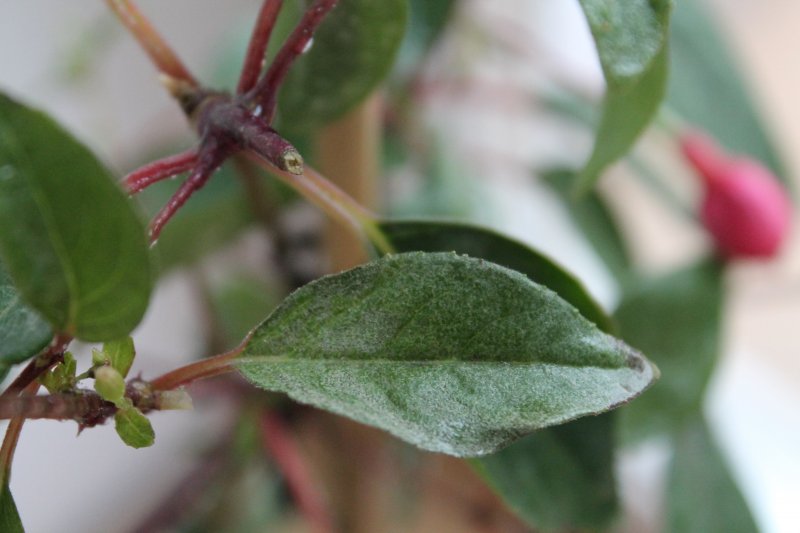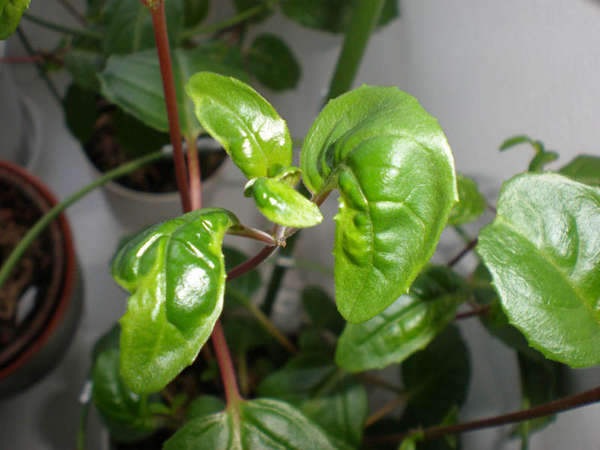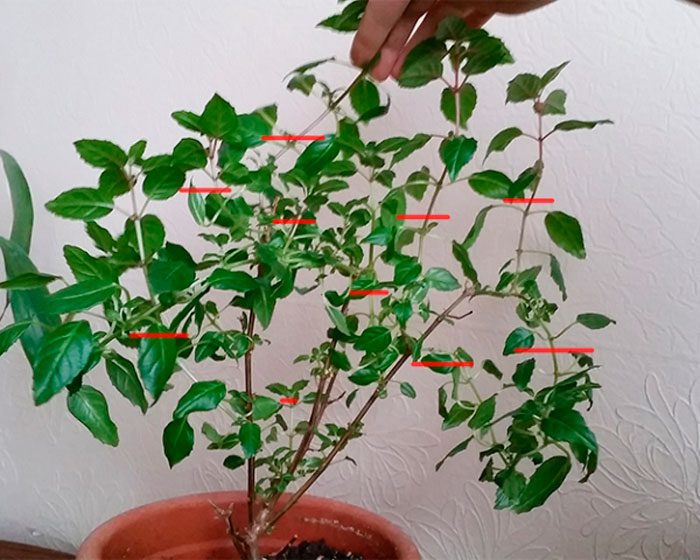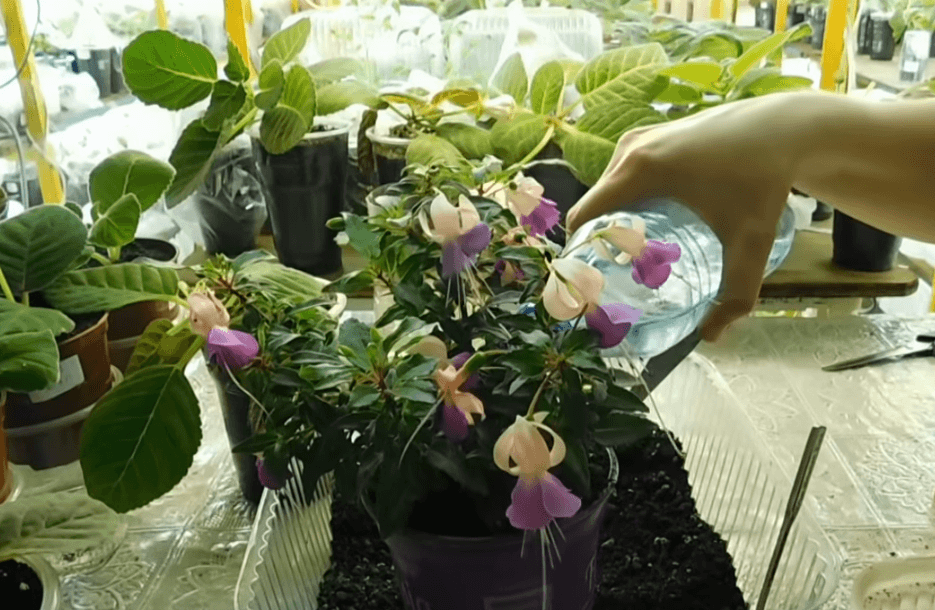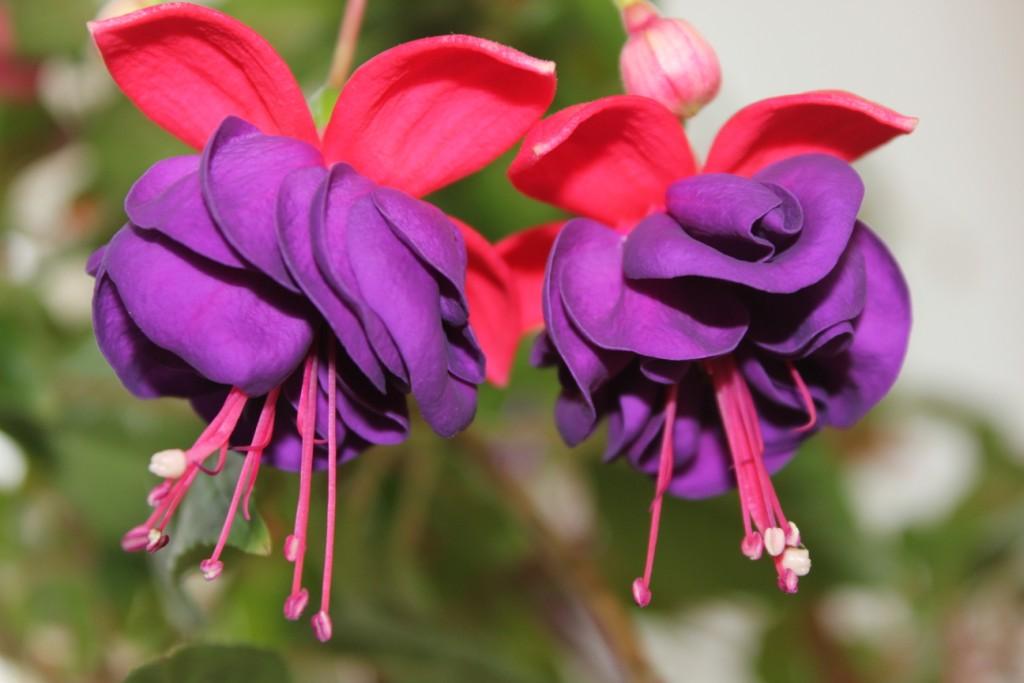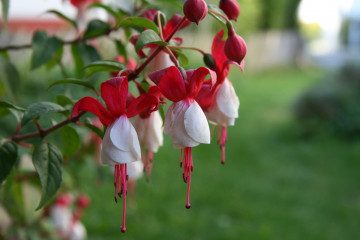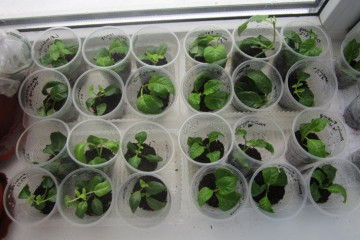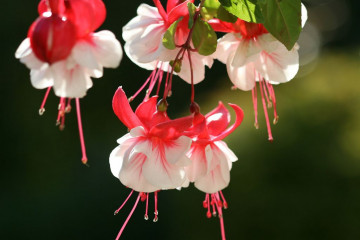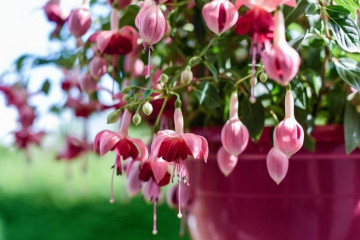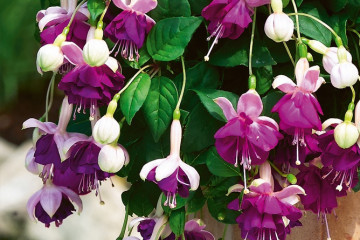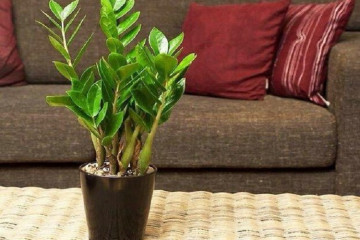What to do if fuchsia does not bloom at home
Content:
Fuchsia (Fuchsia) is a plant from the Cyprus family, which is named after the German botanist L. Fuchs. This representative of indoor flowers does not require much effort in growing both in the form of a standard tree and an ampelous plant. With proper care, fuchsia blooms from May to November.
Why does fuchsia not bloom, but gives only foliage
The main problem for flower growers is the situation in which, for some reason, fuchsia does not bloom at home, they do not know what to do if the flower drops its buds and forms only foliage. The reasons may vary. Eliminating short-term problems will help fuchsias bloom this year. Systematic care work will take more time. The competent activity of the florist gives the chance that the plant will always bloom.
The main reasons why the buds of fuchsia fall off, not having time to open:
- air temperature. In the absence of flowers in fuchsia, the conditions for observing the temperature regime should be checked. Heat is destructive for this flora object. When the temperature rises above 30 ° C, the plant will drop flowers, then leaves. In winter, temperatures can range from 5 ° C to 10 ° C. By the way, a ceramic pot protects delicate plant roots better from heat than a plastic one;
- exposure to drafts. Fuchsia loves fresh air, but exposure to drafts is extremely contraindicated for flowering. The sun's rays will easily burn the delicate foliage, which is why the unopened buds will fall off;
- improper watering. The flower quickly reacts to a lack of moisture by dropping buds and flowers. Its greenery becomes lethargic and sinks to the bottom. Death occurs when the soil clod in the pot is completely dry. You should not allow oversaturation with moisture, as the roots will rot;
- poor lighting. With a lack of light, the shoots turn pale and stretch in length. The plant weakens and becomes incapable of flowering. The leaves begin to wither, and the flowers do not want to open;
- lack of necessary feeding. The buds are very fond of phosphorus-potassium fertilizers. Without top dressing or irregular application, they become smaller and do not want to open. As a result of overfeeding, the plant will increase the deciduous mass and lose its ability to bloom;
- pests and diseases. As soon as possible, it is worth establishing the nature of the disease and starting treatment.
Other, no less important reasons:
- violation of wintering. At temperatures above 10 ° C, the plant stretches upward. In spring, weakened elongated shoots do not have enough strength for flowering;
- large landing capacity. Flowering occurs after the root system is completely entwined with a soil coma in a pot;
- improperly selected soil. Light soil is depleted and overdried, while the flower is starving. In heavy soil, young roots develop poorly and poorly nourish the stem with moisture;
- late flowering variety. The impatience of flower growers leads to the fact that the bush does not bloom. You should pay attention when buying a plant variety. Late blooming flowers grow to a certain size, only then they start the flowering process.
Why fuchsia sheds buds and how to fix it
The plant will definitely drop the buds if, at the moment of their appearance, it is turned and moved.
How to feed fuchsia for abundant flowering
A distinctive feature of a capricious flower during bud ovary is the need for nutrients. Fertilize every week from spring to autumn. The composition of the soil containing vermicompost has a positive effect on flowering.
Each period of plant growth requires special feeding:
- fertilizers with a high nitrogen content will help to increase the green mass and cause the growth of young shoots;
- phosphorus and potassium will make fuchsia bloom generously, open to numerous buds.
Alternating mineral and organic fertilizers is the best option for flowers. From organic for abundant flowering and the formation of strong buds, experienced florists recommend Fertimix. Add 20 ml of fertilizer to 1 liter of water and water it 2 times a month. Of the mineral fertilizers, the following preparations have shown themselves well:
- uniflor-bud is used for watering once a week. To obtain a solution, you need to dissolve the drug in an amount of 1 ml in 1 liter of water. This composition will contribute to the development of a large number of flowers;
- the effect is spring, planta miracle growth is applied pre-infused for a day. You need to dilute 5 g of the product in 2 liters of water. Once every seven days, the plant is sprayed with the resulting solution.
Whitefly on fuchsia: how to get rid
Small white insect - whitefly - feeds on plant sap. In the absence of urgent measures to destroy the pest, the flower will die. It is difficult to find the parasite in small numbers, but it multiplies very quickly. Regular inspection of the underside of the leaf plates will save the houseplant from death.
Whitefly will not appear during the following preventive measures:
- systematic ventilation of the room;
- maintaining moderate humidity;
- planting plants at a distance;
- at high humidity and low air temperature, do not spray;
- treat fuchsia with preparations to stimulate growth, such as epin, house flower.
Chemical and folk remedies, as well as traps and fuminators, will help save your favorite plant from the whitefly. Chemistry, getting inside the plant, kills the harmful insect in a few hours. The following drugs are worth buying: aktara, spark, acarin, conifor, atellik. They should be used strictly in accordance with the instructions for use.
Folk remedies are less toxic and infect the pest, falling on its body. They are safe for children and animals. The most proven effective folk remedies for combating the insidious whitefly include:
- a solution of tar or laundry soap. One part of the crushed soap is dissolved in six parts of water. Treat the leaves with foam, whipped with a sponge. The composition must not get into the soil;
- tincture of garlic. How to make it: infuse garlic (3 cloves) in water (1 liter) for 2 days in a dark place. Once a week, fuchsia is sprayed with the resulting product;
- sugar syrup. The composition includes 200 g of water and 2 tbsp. tablespoons of sugar. Spray the affected areas with the agent once every 5-7 days. After the pest has disappeared, wipe the leaves with a damp sponge from sugar;
- tincture of yarrow for spraying. The remedy is infused for 2-3 days. Use the crushed leaves of the plant in the amount of 100 g per 1 liter of water;
- extract of feverfew with alcohol. Pyrethrum (25 g) is poured with alcohol (100 g) and insisted for half a day. The infused extract (20 g) is diluted in water (1 l) with the addition of laundry soap (5 g). The prepared solution is sprayed with sick fuchsia until the pests are completely destroyed every 7 days.
Fuchsia diseases
To proceed with the correct elimination of the problem, you need to establish the cause. Common options according to leading botanists include:
- the appearance of pests;
- bad light;
- lack of nutrients.
The problem of reducing daylight hours is easily solved by organizing lighting in winter with lamps, and in summer the flower must be transferred to the most luminous place, but exclude direct sunlight. From this, the leaves turn yellow.
In good light, curling of leaves and yellowing indicates a lack of macro and micronutrients. Potassium, zinc, molybdenum are the main flower feeding in case of this problem. The sheet plate will tell you which element is missing.
Pests and parasites can cause leaf curling in a young plant. In the flower garden, caterpillars undermine the roots and stems, the leaves wither and curl. Removing the caterpillars and treating them with insecticides will save the flower.
Aphids and nematodes can settle on the leaves. They are invisible because they bite into the leaf. Having lost the juices, the leaves curl. Control measures are the same as for whitefly. Preventive measures with insecticides will kill the clutch of insects in the early stages of reproduction.
What fuchsia loves and how to care for it
Fuchsia prefers coolness and light. In summer, it is advisable to move the pot to the balcony or to the garden. An east or north side sill is ideal. The capricious beauty cannot stand the stuffiness.
The transplant is carried out only by the transshipment method strictly as required. For a houseplant, purchased soil, ready-made or prepared independently, is suitable. Peat, sand, humus, leaf and sod land are mixed in equal parts. It is imperative to make a drainage layer when transplanting.
Fuchsia loves the pruning procedure. The plant is very plastic. The owner, if desired, can give the shape of a standard tree, bush, pyramidal or ampelous. The first pruning is done at the end of the growing season in October. At this time, remove all the stems that have bloomed, departing 2 cm from the dormant buds.
The crown is formed by the second pruning in January. After acquisition, the plant needs time to adapt and root. Only when new leaves appear, you can begin to pinch the fuchsia.
How to water fuchsia at home
The most important condition for keeping fuchsia is moderate watering. The growth and flowering process of the bush depend on its regularity. Water needs settled or filtered. Spraying will help to refresh the plant on stuffy days. You need to water the flower as the top of the soil dries up.
Fuchsia is considered a plant with positive energy. It helps to strengthen family relationships, develop a person's intuition and creativity. The sweet and sour fruits of this amazing plant are used as a seasoning for meat dishes.
A bright beauty, rich in a variety of varieties - fuchsia - will be a wonderful exhibit in the collection of a florist. With proper care, it will thank you with beautiful flowering for many years.

